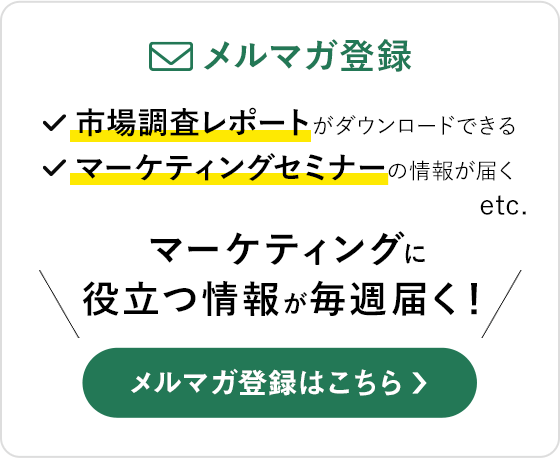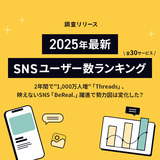Newer BTS fans often search "members"
BTS is a seven-member idol group from South Korea that debuted in 2013. BTS's popularity has spread throughout Japan and around the world, and they have risen to international stardom, having been nominated for a Grammy Award in 2022.
The rise in popularity is also evident from the online behavior analytics. First, looking at the trends from the year of BTS' debut to June 2022 on Google Trends, it shows a rise (*) in popularity around 2019 and from late 2020 to 2021.
People searching "BTS" in Japan
(Period: January 1, 2013 - June 7, 2022)
Materials from Google Trends translated by VALUES
*Trend in popularity
The numbers represent the search interest relative to the highest value on the graph for a specific region and period of time. 100 indicates that the keyword was the most popular, 50 indicates half as popular, and 0 indicates that there was not enough data for the keyword.
We can see that the number of searches increased since October 2020, after the release of the hit song "Dynamite," which became popular worldwide.
So who are the people who are interested in BTS? To find out, we use Dockpit to analyze the trends of BTS searches over the last two years, when the popularity of BTS in Japan became more remarkable. Dockpit is a web behavior analytics tool from VALUES that enables users to analyze competitor sites and research trends in a browser, using behavior data that is updated monthly.
The demographic conducting the most searches is female by gender and 40s by age.

People searching "BTS"
(Period: July 2020 - June 2022, Devices: PC & smartphone)
Source: Dockpit
So what keywords are people searching together with "BTS"? Let's take a look at the trend of combination keywords.

People searching "BTS"
(Period: July 2020 - June 2022, Devices: PC & smartphone)
Source: Dockpit
In addition to song-related words, the names of the members and the word "members" are ranked in the list. We can assume that those who search for "members" or for a members’ individual names are new to BTS and have some sort of interest, but are not yet familiar with the group.
Analysis based on BTS-related search keywords and visited sites
Thereafter, we will identify a scenario in which people with slight interest in BTS become established BTS fans. For this purpose, we define people who are considered to be relatively new BTS fans. We will examine the changes in web behavior of this group of people over the next several years. Specifically, we will analyze three perspectives: changes in the number of people who take BTS-related actions, changes in the number of BTS-related actions taken, and changes in the content of the BTS-related actions.
By definition, we will aggregate data on people who meet the following condition:

In addition, the definition of BTS-related actions includes the following:
Definition of "BTS-related actions"
| Related search |
Either “BTS or a member’s individual name is a search keyword |
| Related website |
The viewed website is either bts-official.jp or btsbantan.com |
| Related landing pages | The page title includes either “BTS” or a member’s individual name |
Analysis Perspective 1: Change in users - hardcore fandom is dominated by women ages 40 and above.
■a. Changes in percentage of users
To begin, we will see how the percentage of people who take BTS-related actions among new BTS fans changes over time. How many people remain continuously interested?
The graph below shows the number of months elapsed since the first BTS-related action was taken and the percentage of people with that have taken BTS-related actions. (It includes data for up to 40 months.)

Approximately 80% of new BTS fans in 2019 have taken BTS-related actions since then, indicating continued interest in BTS.
■b. Changes in the gender and age composition ratio
So, are there changes in the demographics of those who are interested in BTS?
Looking at the gender and age composition of those who have taken BTS-related actions, it can be seen that as time passes since taking the first BTS-related action, the ratio of men and women in their 20s has decreased, and the ratio of women in their 40s and older has increased in particular.

As shown in the graph, the percentage of women in their 40s and older increased over time. It may be that younger men and women have shifted their interest to other idol groups, etc., or that even if they are interested, they are less likely to use their PC browsers to gather information.
Analysis Perspective 2: Change in the number of related actions - The number of searches decreased and visits to the official website increased
■a. Changes in the number of BTS-related actions
From the previous section, we have inferred that approximately 80% of people relatively new to BTS continues to take BTS-related actions afterwards, indicating their continued interest. So, does the number of BTS-related actions among people with continued interested change over time?
The graph below shows the number of months elapsed since the first BTS-related action was taken and the number of related actions per person. (It includes data for up to 40 months.)

In the first year after the initial BTS-related action was taken, 166 sessions (*) of BTS-related actions were observed per person in a year, but the number of BTS-related actions gradually decreases after one year or more. In other words, it can be inferred that the amount of related behavior tends to decrease over time, even though interest continues to grow.
(*) Session: Indicates the number of visits per site; a session is defined as a separate session if more than 30 minutes have elapsed or if the same site is visited from different inflow sources.
■b. Changes in composition ratio of BTS-related actions
In the previous section, it was clarified that the number of BTS-related actions per person decreases with time. Then, does the content of related actions change over time?
This shows the transition of the composition ratio of all BTS-related actions in each period.

The breakdown shows that while BTS-related searches account for about 30% of the searches within the first year after the initial BTS-related action is taken, the percentage of searches decreases as months pass after the initial action, and the composition ratio of related landing pages increases. In addition, at the point where 12 months have passed since the initial action, the percentage of visits to related websites, such as the official BTS website and BTS summary sites, also increases.
Initially, many searches are conducted "to learn" about BTS, but as time passes and users become more established as fans. We can see that they do not search but only collect necessary information from related landing pages “to follow" BTS topics. This shows that people are seeking more hardcore and in-depth information.
Analysis Perspective 3: Details of BTS-related actions – Supportive fandom and seeking more hardcore information
■a. Change in search keywords
In the previous section, it was clear that related searches decrease over time. So, are there differences in keywords searched across different periods of time since the first BTS-related action was taken?
Here is the ranking of search keywords by elapsed time since the first BTS-related action (in order of user volume).

The breakdown of BTS-related actions reveals that search is active in the early stages, but the keyword ranking shows the initial search motivation. *The orange highlighting is applied to words related to the names of the BTS members.
The orange highlighted area which indicates the search volume related to members' names has decreased over the years, suggesting that in the early years, interest in the group and its members, such as members’ individual names, is high. On the other hand, after more than a year has passed since the initial action, the search volume decreases and the searched keywords change to those related to group activities, such as song titles, names of online shows, and Grammy Awards.
It can be seen as a shift from the initial period of trying to get to know the members to a search intended “to follow” the group's activities, which can also be seen as showing support.
■b. Change in sites viewed
What are the changes over time regarding inflow to related landing pages, the composition of which has increased over time? We would like to study this from a site-by-site analysis by time period.
This is the website ranking (in the order of inflow session volume) by elapsed time starting from the first BTS-related action.

It can be seen that the viewing on YouTube is frequent in the early phases, but the visits to Yahoo! News started increasing after. Also, it can be seen that the inflow to the BTS official website is increases as time passes.
After people become interested, they will no longer browse a large amount of content on YouTube and will turn to more hardcore activities, such as browsing necessary information on news sites and obtaining information from official websites. YouTube and Twitter are used in the initial “pre-fan phase” “to learn” about BTS, and after that, in the next phase, the begin “to follow,” with many shifting their actions to browsing BTS-related topics on Yahoo! News, etc.
Study: The appeal that makes you want to follow is the key to creating fans
The results and implications that emerged from this analysis are summarized in the following figures. First, the data on changes in the percentage of people who take BTS-related actions shows that approximately 80% of people relatively new to BTS have become established fans. The data on the change in the number of related actions shows a tendency that the number of related actions decreases as the users become established fans.

In this study, we analyzed the retention rate and the number of BTS-related actions taken by people over the last three years on the subject of people who are relatively new to BTS. It was found that, on average, about 80% of people took related actions during the three years after taking their initial BTS-relation action, indicating that they clearly continue to be interested, although the degree of interest varies.
We surmised the period of online behavior people were searching "to learn" and the period of behavior that people were using “to follow” BTS-related topics, and we found the situations in which the people are likely to become established as fans as time passes after taking their first actions. (See figure below)

In Step 1, many found enough interest in BTS to take the initial actions "to learn" and get to know more about them. This is the "pre-fan phase." Specifically, they searched for the members' names and browsed related content on YouTube. From there, in Step 2, we saw the related actions shift, with people taking actions with the intent "to follow," rather than "to learn" about BTS. Specifically, they were searching more for group events and often visit their official website. In addition, they were also closely monitoring group-related topics through media outlets such as Yahoo! News.
Based on the above investigation, it can be said that it is important to consider the triggers and attractions that make people want "to follow" in order to encourage people to transition to the Step 2 phase of fandom. For example, the key would be to always put the fans first, whether in interviews or at award ceremonies, and to continue to communicate the strength the of the fan base, always expressing gratitude and love for the fans, and to advertise the excellence of the music and performance.
By qualitatively analyzing the process in which people evolve into BTS fans in the future, we may be able to unravel and better understand the factors that will help people move from taking related action that are intended "to learn" about BTS to related actions that are intended "to follow." We encourage you to use this survey as a reference to analyze trends using online behavior analytics.
▼ VALUES specializes in market trend/competitive analysis using online behavior analytics. If you are interested, please feel free to contact us by clicking the button below.
About Dockpit
Some of the data in this investigation is from Dockpit, an analytics tool with online behavior log data and user demographic information under the permission of panelists in Japan presented by VALUES, Inc.
※The numbers of users are estimated by the data in the monitor and the internet population in Japan.
【英語学習用】ネイティブライターによるお役立ち表現

本記事はネイティブライターが翻訳。
その中から、お役立ち英語表現をピックアップします。
※日本語での記事はこちらをご確認ください

BTS初心者が「推し活ファン」に定着する過程を行動ログデータから調査してみた
https://manamina.valuesccg.com/articles/19282013年にデビューし、2019年頃から2021年にかけて日本国内のみならず世界中を席巻したBTS。 では、BTSに関心を持ち始めた人はどのようにして推し活をするようなコアファンとして定着していくのか?今回は、2019年の時点でBTS初心者と思われるユーザーを検索行動から類推し、その後3年間のWeb行動分析から、ファン定着のシナリオを推察します。


























ネイティブボキャブラリー5選